
Heavy rotation: Florian Kirschbaum saves the forest from his helicopter
Story
Forestry liming from the skies: pilot Florian Kirschbaum and his team have a very special job to do.
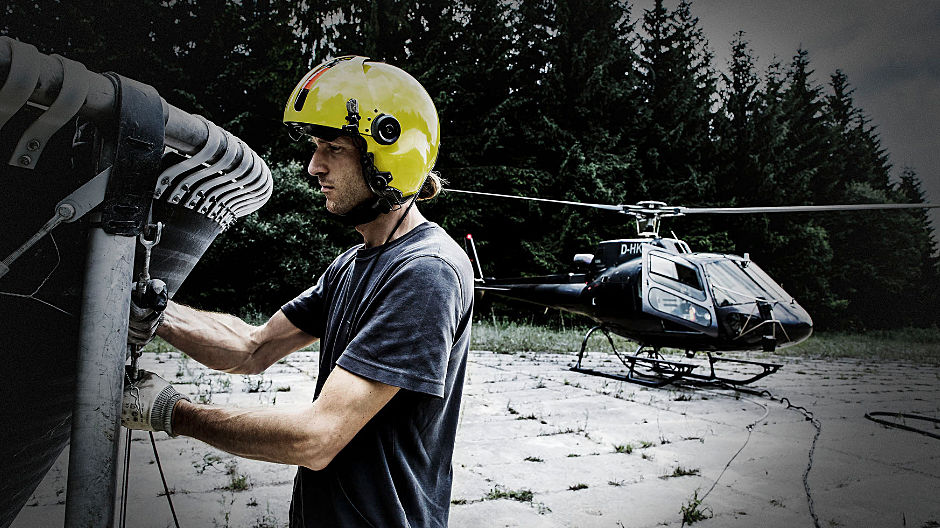
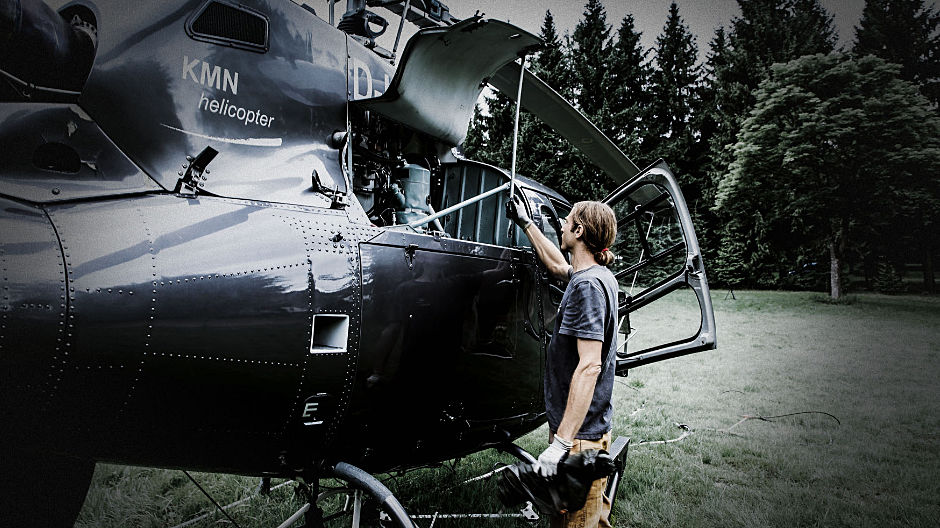
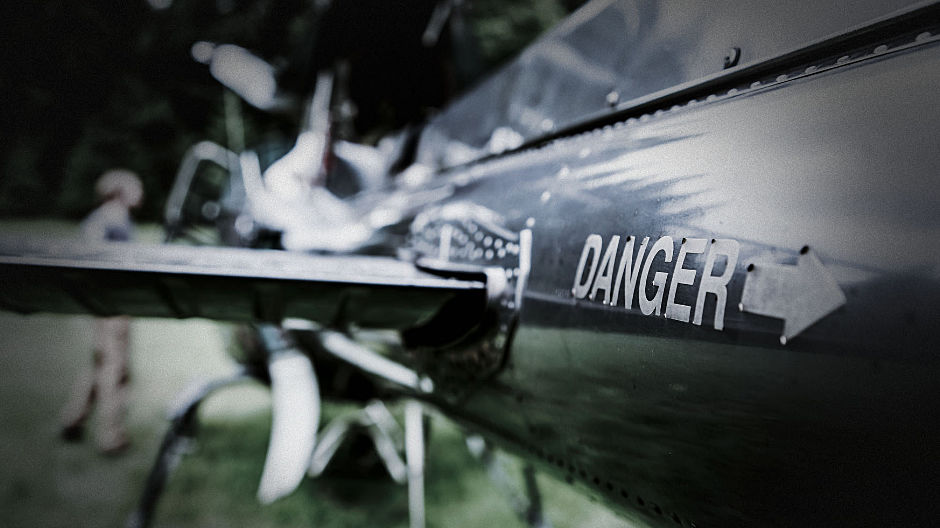
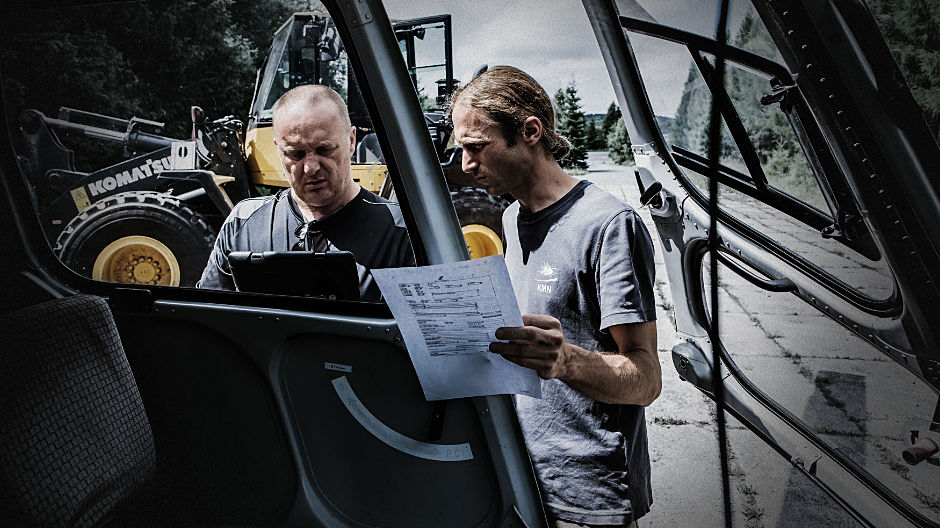
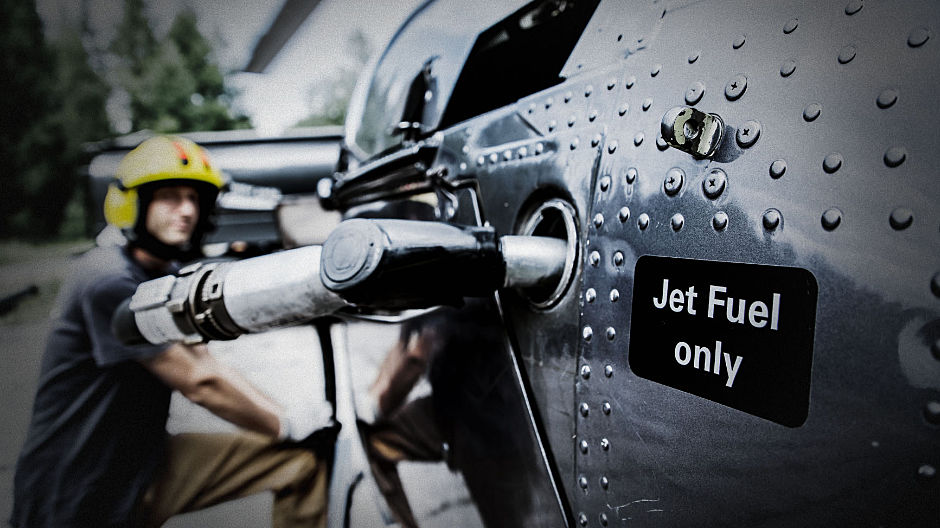
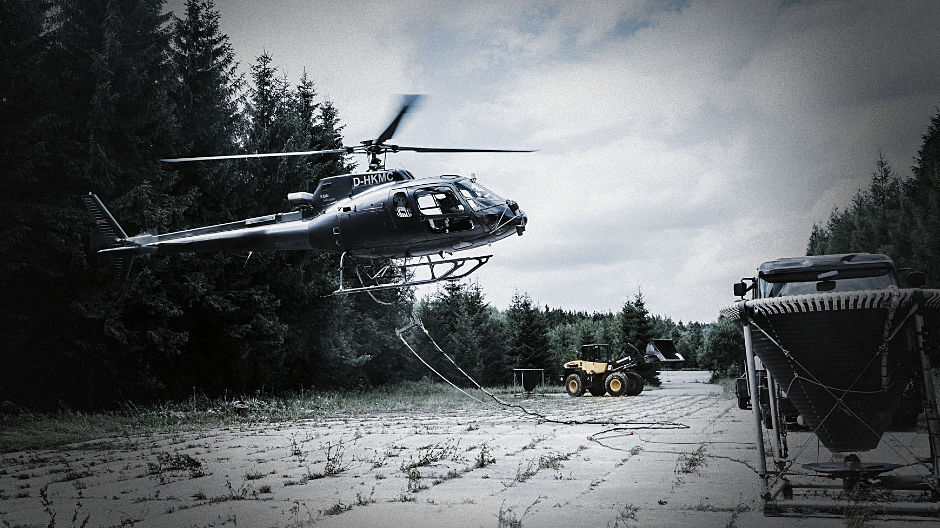
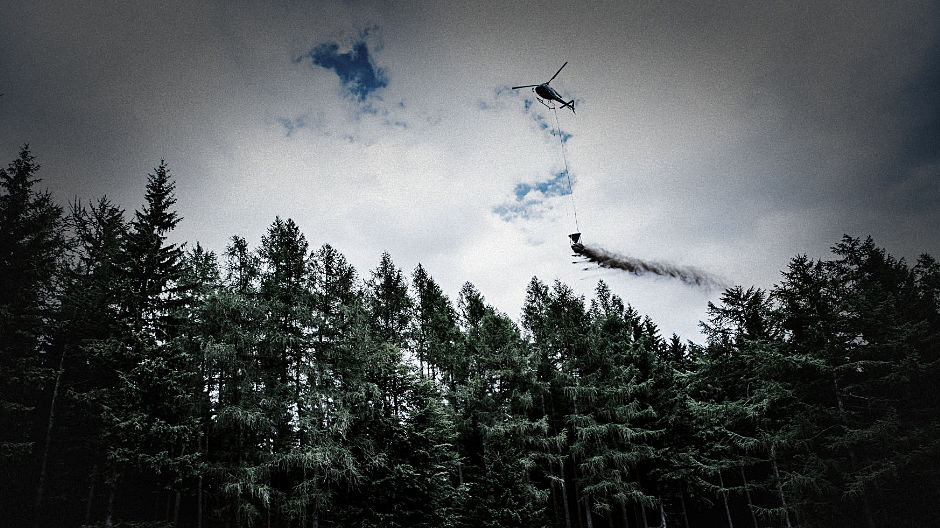
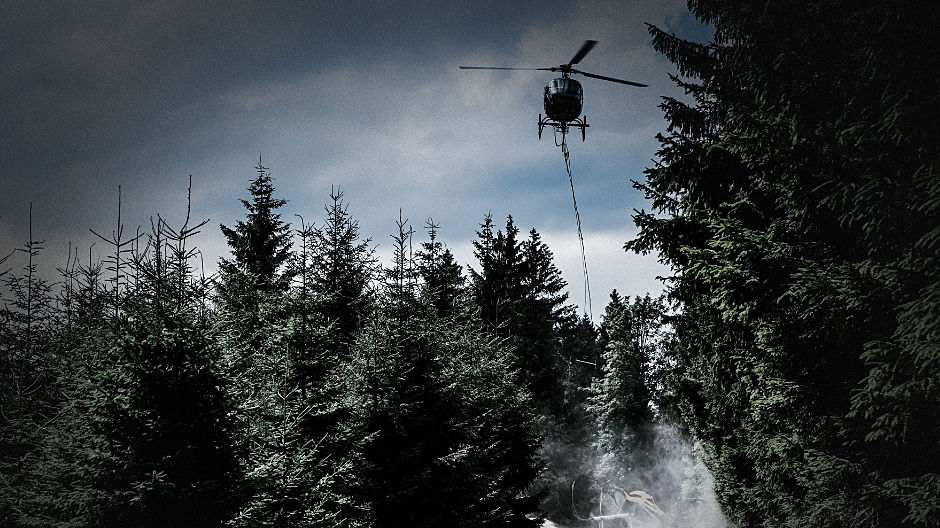
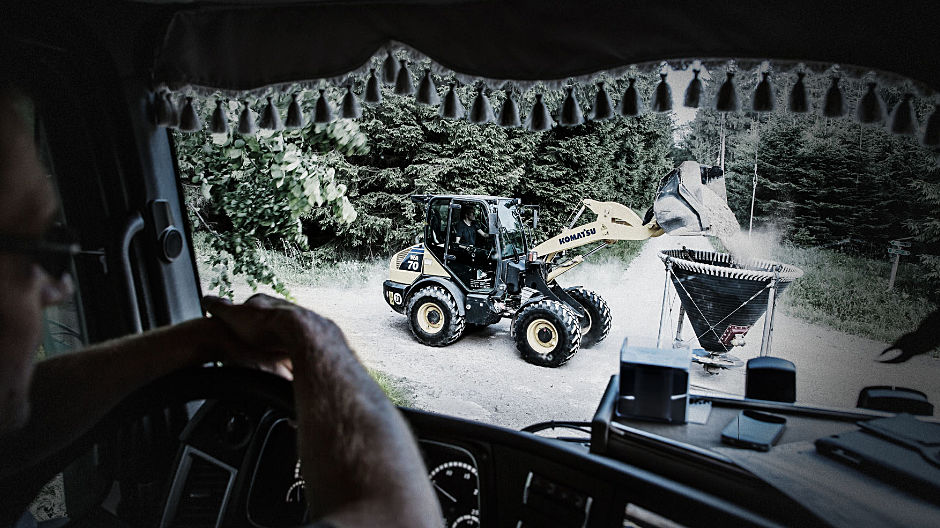
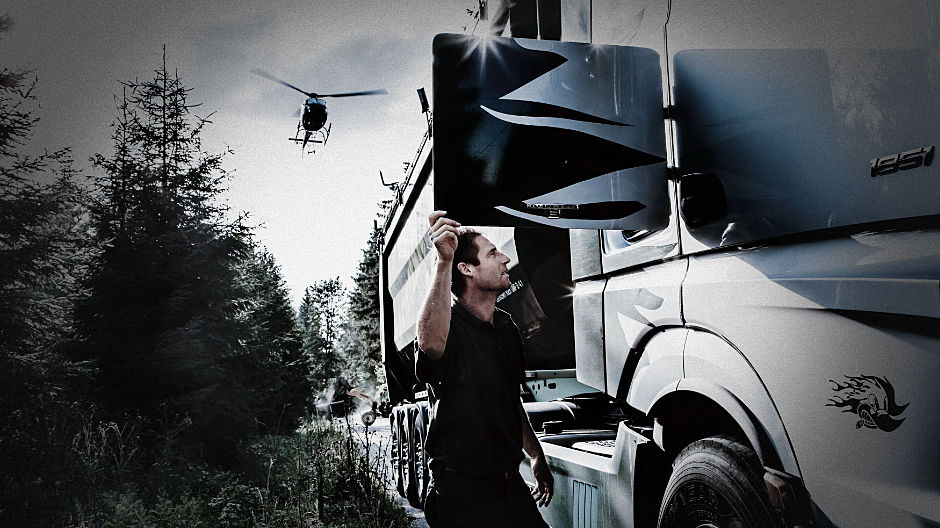
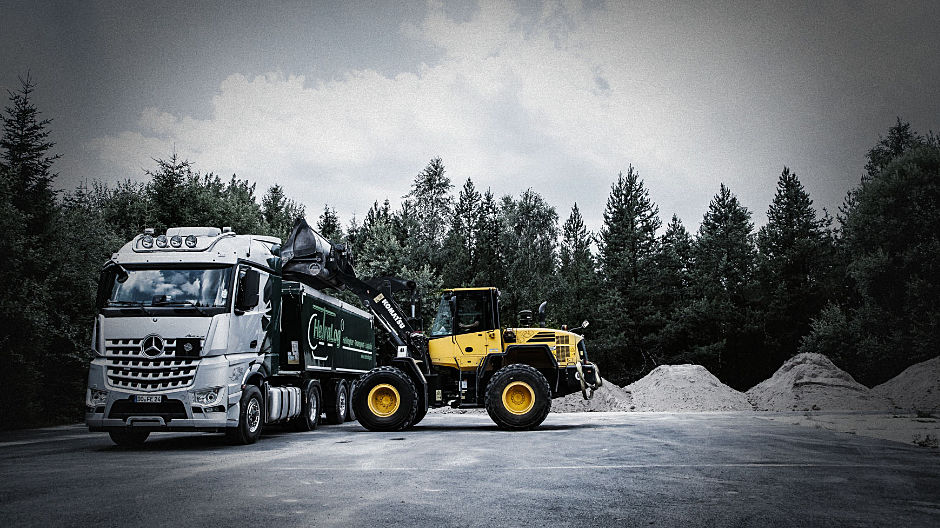
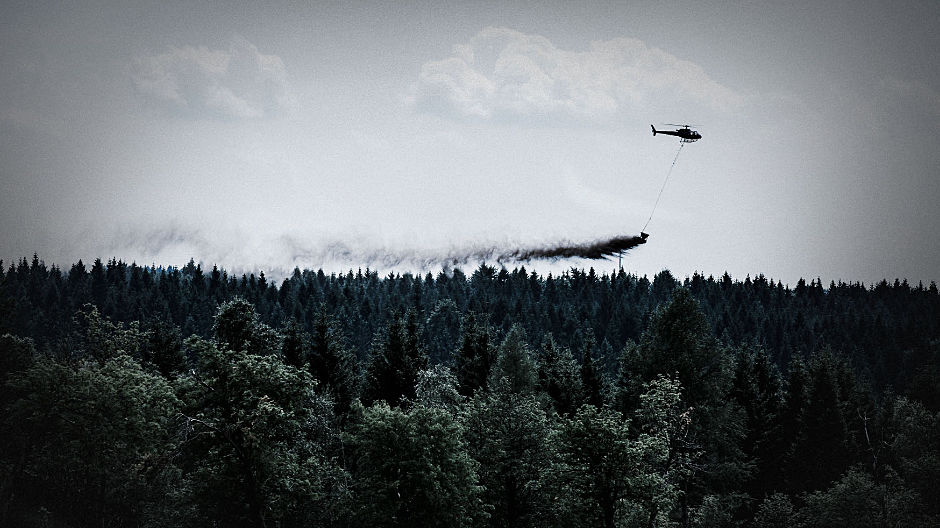
This is where Flo should be. Marc Redlich checks on his tablet. According to the map on the screen, they're just a few kilometres away from the destination. He leaves behind the pothole-ridden country roads and turns into a forest track. With his left hand, he reaches for the window switch and drops the window a little. Can he already hear Florian nearby?
And then all of a sudden, things go really fast. The deafening drum of rotor blades and a shadow scurrying across the Arocs are followed by a wall of dust which rolls directly towards the truck. Marc quickly closes the window. "Otherwise my whole pad here will be full of dust and lime," says the 37-year-old. The helicopter is now flying just 50 metres away from the truck. Hanging 20 metres below the dark grey "Squirrel" is an aluminium funnel from which a load of light-brown powder trickles down to the ground. Then the helicopter turns back towards the loading area where Marc has since also parked up.
Smoothly, the pilot puts down the huge spreader while keeping the helicopter steadily hovering above. A wheeled loader fills the container and then the chopper gets back to spreading. It's all done in a matter of seconds. Marc waits a short while until the dust falls a little further down. Then he takes his foot of the brake and drives directly towards the loading area. "That was Flo," he says, pointing to the sky with his finger. The air outside tastes chalky. Your mouth feels as dry as dust.
The Hetralog team for which Marc and Florian Kirschbaum work is
responsible for liming an 1800-hectare area in the forests of the
eastern Erz mountains. They let 5400 tonnes of lime flutter down onto
the treetops, from where it slowly makes its way down to the forest
floor. As part of this operation, Florian takes to the air for several
weeks in his helicopter. On average, around 300 tonnes of the product
are released on a daily basis.
The pilot has now landed the aircraft – time to refuel. "We use the lime to counteract the acidic ground," he explains, opening the clasp on his yellow helmet at the same time. Over the decades, industrial facilities have left their mark on the region. Rain with greater levels of sulphur and thus higher acidity has put enormous strain on the forest. "The purpose of the lime is to improve the pH value of the ground and thus create beneficial conditions for the roots of trees and plants. It's our way of helping stabilise the ecosystem in the forest," says the 38-year-old.
"In the forest, we need the engine's full power and torque."
Marc Redlich, driver
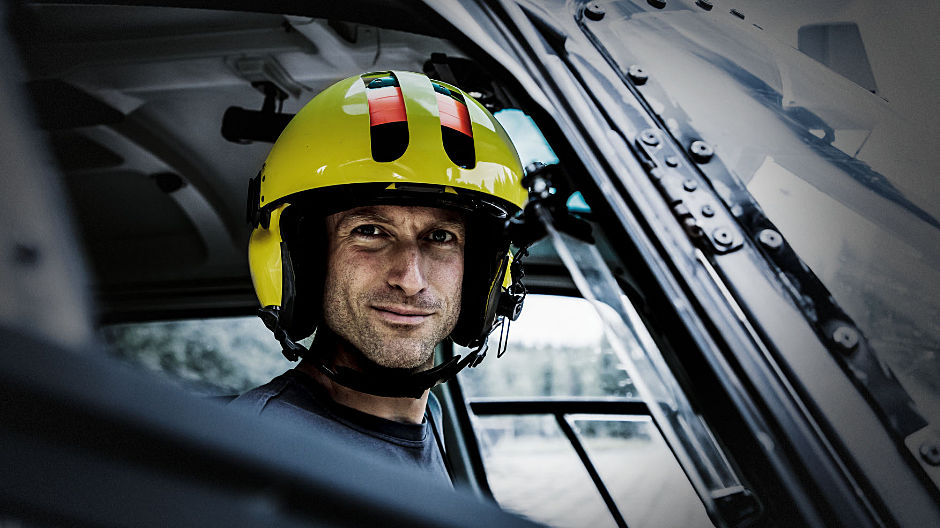
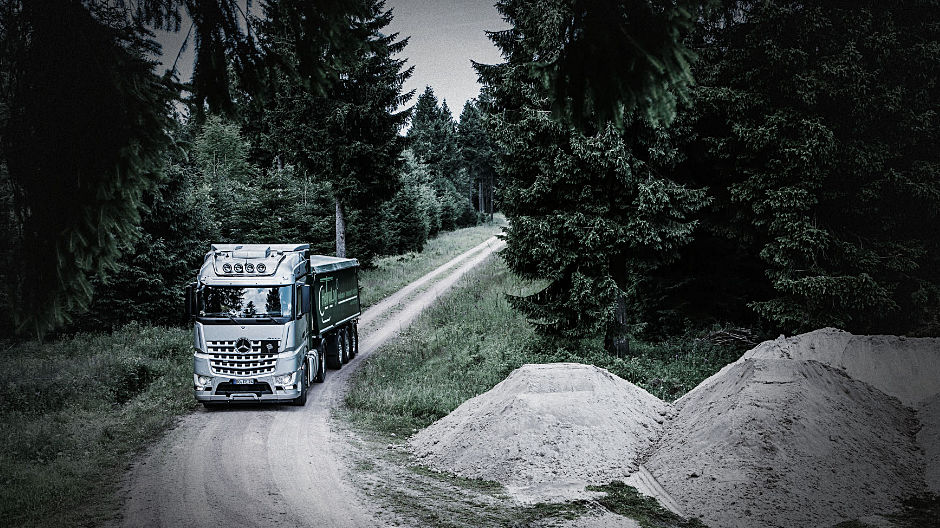
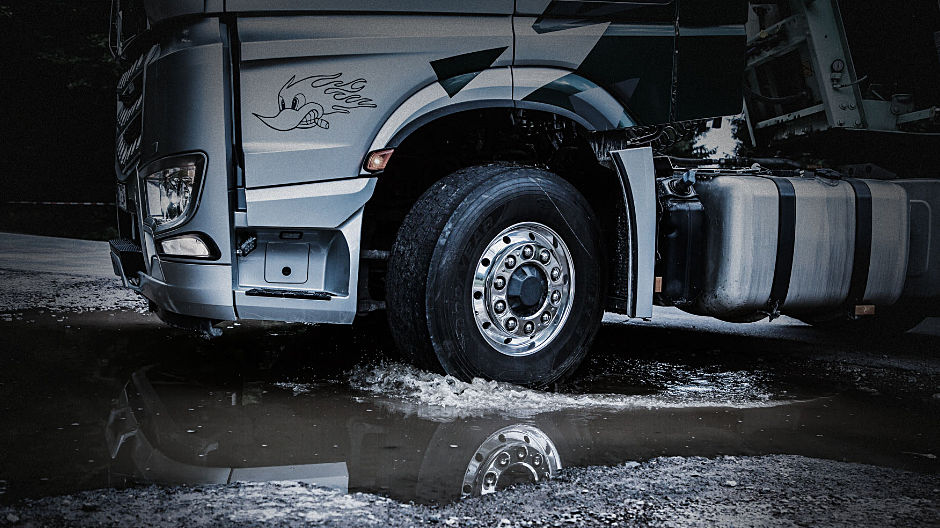
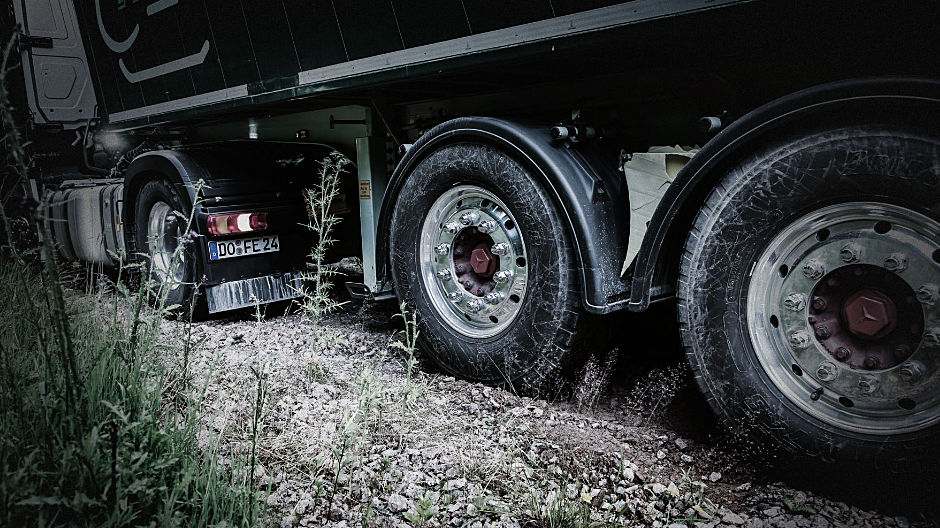
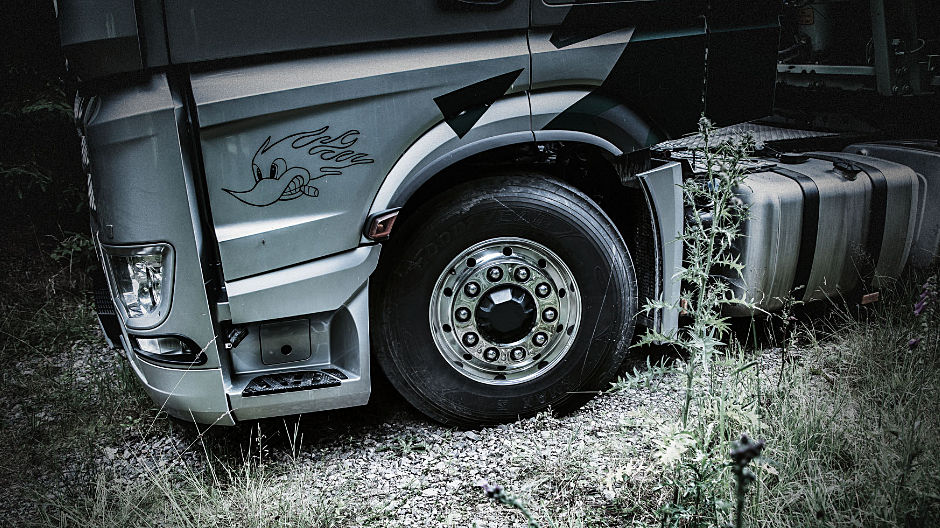
Conversely, logistics here actually help keep the forest healthy.
Klaus-Peter Wilhelms is one of the managing directors of Frachtente
in Dortmund – the haulier handles the transport aspects of the group
of companies. "We supply our clients with a complete logistics
solution: to lime the forest from the skies, we prepare loading areas
which are accessible both to trucks and the helicopter. The helicopter
also needs somewhere to refuel nearby. That's why we also have two
refuelling vehicles on-location. And we use Mercedes-Benz trucks to
bring the lime to the loading areas in the forest," explains
Wilhelms.
One of the trucks – an Arocs 1851 with Hydraulic Auxiliary Drive – is being driven by Marc today. "It's a simple calculation really: flying time is the most expensive aspect here. The deeper we drive into the forest, the shorter the distance which the helicopter has to fly. And thus the more efficiently we can work," says Marc.
To obtain fresh supplies of lime, Marc and his colleague Rigo
Knobelsdorf drive with their Arocs and Actros respectively between the
forest and the quarry two hours away. 26 tonnes of lime are on-board
each vehicle. "We clock up a right amount of mileage on the
motorways. But then it gets balanced out by driving through the forest
each day. If the loading areas are on tough routes, we need the
engine's full power and torque. That gives the Hydraulic Auxiliary
Drive the chance to show us what it's made of," says the
Dortmund-born trucker.
Flo removes the fuel pump from the nozzle of the helicopter and
brings it back to the refuelling vehicle. He has to land at Hetralog's
makeshift refuelling pad every 50 minutes. The maximum take-off mass
of the helicopter is 2800 kilogrammes. 1200 kilogrammes of which
already have to be removed due to the lime spreader and its load, then
there are the 200 kilogrammes of kerosene, the 90 kilogrammes of the
pilot and his affairs, not to mention the unladen weight of the
helicopter at 1250 kilogrammes. That means Flo is literally flying at
the limit. Here, every single kilogramme counts. The cockpit is
emptied to contain only the absolute bare minimum. A seat for a
co-pilot or passenger? No. "The aircraft is constantly working at
the performance limits, otherwise the project wouldn't be economically
viable," he says, locking up the refuelling vehicle which is
parked next to the helicopter.
Flo wants to get back in the air. But first, he has to carry out a check of the aircraft's exterior – the pre-departure checklist. "This is something for which you have to make time," he says, inspecting the helicopter in a concentrated manner. Every surface is checked meticulously for any suspicious traces of oil, and he also checks whether the play around the bearings is in order. Then he checks the displays in the cockpit: are the oil pressure and oil temperature correct? Are there any warning lights which are lit? If everything is OK, he can depart. The storm which the rotors kick up shakes the surrounding trees.
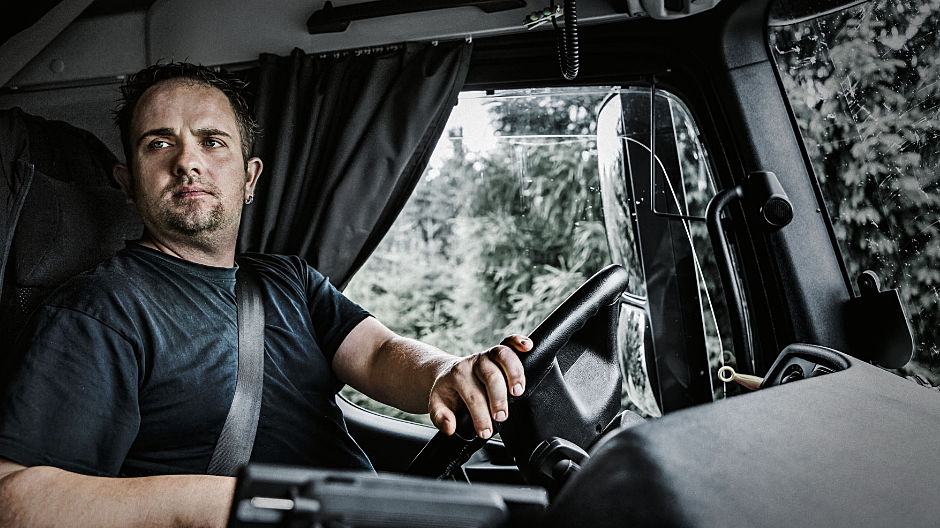
Lots of forest tracks and even more motorway miles: on average, Marc covers 140,000 kilometres each year.
Every second is used.
Every couple of minutes, Flo flies to the loading area and has the container filled. As soon as the spreader is firmly on the ground, the wheeled loader tips in a fresh load of powdered lime. Hardly a single second is wasted. The map with the GPS co-ordinates on the tablet in the cockpit shows the pilot the next area which needs covering. "I can also see the loading area from which I will most quickly arrive at the destination," says Flo. Every second costs money. The helicopter consumes around 180 litres of kerosene per hour during forestry liming operations.
In the AS 350, Flo waits until the rotational speed of the rotors
climbs above 390 revolutions per minute. Then he pulls on the pitch
control to change the inclination of the rotor blades. The 632-kW
powerhouse starts howling. The helicopter climbs slowly until the
bucket is above the treetops. Absolute care is required here: the
rotors have a diameter of almost eleven metres and there are trees on
both sides of the aircraft. Mirrors at the front of the cockpit allow
a view of the surface beneath the helicopter.
Often, the distance between the container and the treetops is just a
few metres. "I can't forget about the spreader," says Flo.
"If it gets stuck, there's real danger." In an emergency, he
has the possibility to drop the spreader from within the cockpit.
"Thankfully, I've never had to do that," affirms Flo with a
smile. Such a situation would be a matter of life or death.
Good organisation is everything – both at work and at home.
He's already on his way back to the loading area. Flo's shift time
must not exceed ten hours. 8.5 hours of which he spends flying.
"If there are strong, gusting winds, extremely bad weather or repairs which prevent me from taking off, we can't change anything," says Wilhelms. "That's why our team always keeps a close eye on everything else over which we do have control." Smooth collaboration and perfectly timed processes are extremely important to guarantee safety, but also for completion of the order.
Bernd Hell drives the wheeled loader during operations and is
constantly in radio contact with Flo and Klaus-Peter Wilhelms. The
pilot has to know which loading areas still have sufficient lime
available and also informs the team of those areas which need
refilling. There's no space for long detours or waiting times.
During the week, the Hetralog team is away from home. "But my family is used to it," says Marc. Tomorrow, I'll be heading back to my wife, daughter and son in the Ruhr area. Flo, too, currently only sees his wife and two sons at the weekend when he's back home in Düsseldorf. "We're well-organised. Otherwise, it would be tough for us all," he says. Marc: "We certainly don't get board, not even at night. That's when we talk through the plan of action for the next day and chat about absolutely anything that comes to mind." Forestry liming is all about team work. Flo and Marc's team will be in action until winter time in the forests. Until then, everything has to be complete so that the lime has time to do its job until the next growth period.
"The aircraft is constantly working at the performance limits."
Florian Kirschbaum, pilot
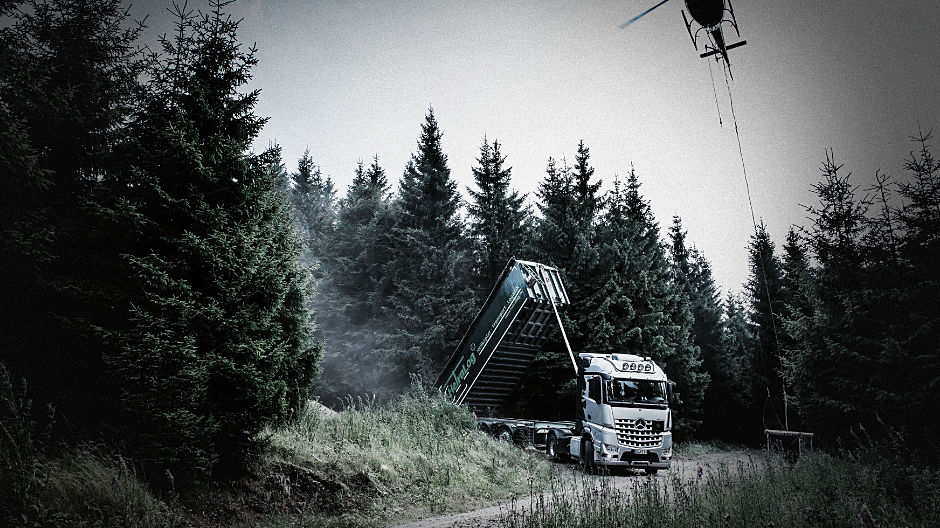
At every take-off, the helicopter kicks up a wall of dust at the loading area – Rigo Knobelsdorf quickly closes the flap of the stowage box.
Photos: Bernhard Huber
Video: Martin Schneider-Lau




Comment
Please log in to post a comment.
4 comments